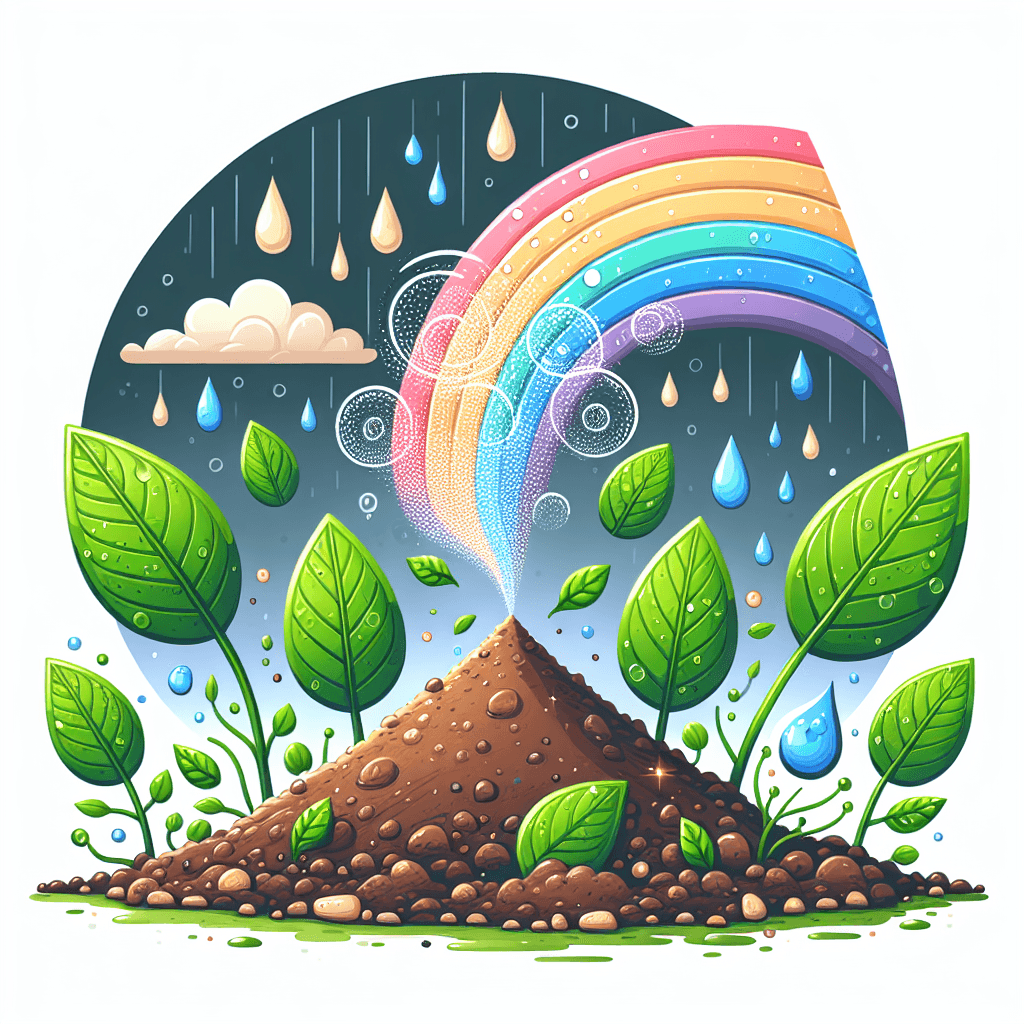Unearthing the Secret: What Actually Creates That Distinct Earthy Smell After Rain Falls
Everyone recognizes the fresh, earthy scent after a rain shower, but it's more than just wet dirt. Discover the real science behind this distinct and beloved aroma.


Too Long; Didn't Read
The distinct earthy smell after rain isn't just from wet soil; it's a specific phenomenon with a scientific explanation that this post uncovers.
Title: Unearthing the Secret: What Actually Creates That Distinct Earthy Smell After Rain Falls?
Introduction
Almost everyone recognizes it – that fresh, earthy, almost primal scent that hangs in the air after a good rain shower, especially following a dry spell. It’s a smell often associated with renewal, clean air, and the relief of quenched earth. But have you ever stopped to wonder what actually causes this specific aroma? It's not just the smell of wet dirt. This distinct post-rain scent, known scientifically as petrichor, has a fascinating biological and chemical origin. This blog post delves into the science behind this universally experienced phenomenon, exploring the key components and processes that create the distinct earthy smell after rain falls.
Main Content
What is Petrichor?
The term "petrichor" was coined by two Australian researchers, Isabel Joy Bear and Richard G. Thomas, in a 1964 article published in the journal Nature. It combines the Greek words petra (stone) and ichor (the ethereal fluid that was the blood of the gods in Greek mythology). They used it to describe the unique scent released from rocks and soil surfaces after rainfall. While often simply called the "smell of rain," petrichor is actually the result of specific compounds being released into the air.
The Star Player: Geosmin
The primary contributor to that signature earthy aroma is a chemical compound called geosmin.
- Source: Geosmin is produced by specific types of bacteria, most notably soil-dwelling bacteria called Actinobacteria, particularly those belonging to the genus Streptomyces. These microbes are abundant in soils worldwide.
- Production: During prolonged dry periods, these bacteria become more active, producing geosmin as a metabolic byproduct. The compound accumulates in the soil and on surfaces.
- Potency: Humans are incredibly sensitive to geosmin. Our noses can detect it at extremely low concentrations – reportedly as low as a few parts per trillion. This sensitivity might be an evolutionary trait, possibly helping our ancestors locate water sources.
How Rain Releases the Aroma: The Aerosol Effect
Geosmin and other compounds are present in the dry soil, but how does rain make us smell them so distinctly? The mechanism involves the physical impact of raindrops on porous surfaces like soil and rock.
Research, including high-speed camera studies conducted by scientists at MIT, revealed a fascinating process:
- Impact: When a raindrop hits a porous surface, it traps tiny air bubbles at the point of contact.
- Rise and Burst: These bubbles shoot upwards through the droplet, much like bubbles in a glass of champagne.
- Aerosol Release: As they burst from the top of the droplet, they release microscopic particles called aerosols into the air.
- Carrying the Scent: These aerosols carry the aromatic compounds – primarily geosmin, along with other substances – from the soil upwards, where they can be easily dispersed by wind and inhaled through our noses. Lighter rain tends to produce more aerosols than heavy downpours.
Other Contributing Factors
While geosmin is the main component of the classic earthy smell, other elements contribute to the overall scent profile of petrichor:
- Plant Oils: During dry periods, various plants secrete oils that accumulate on surfaces like rocks and soil. Rain releases these volatile oils into the air, adding lighter, sometimes slightly floral or herbaceous notes to the mix. Bear and Thomas identified these oils as part of the petrichor phenomenon in their original research.
- Ozone: Sometimes, particularly after a thunderstorm involving lightning, a sharper, cleaner smell can be detected. This is often ozone (O₃). Lightning's electrical discharge can split atmospheric nitrogen and oxygen molecules, which then recombine to form ozone. Downdrafts can carry this ozone to ground level, contributing a distinct "clean" scent that sometimes precedes or mixes with the earthier petrichor.
Conclusion
That distinct earthy smell after rain falls, petrichor, isn't just one thing, but a complex cocktail of scents released by a specific mechanism. It's primarily driven by geosmin, a potent compound produced by soil bacteria (Streptomyces), accumulating during dry spells. When rain arrives, the impact of droplets releases these compounds, along with plant oils, into the air via aerosols. Occasionally, the sharp scent of ozone joins the mix after thunderstorms. Understanding the science behind petrichor transforms a simple, pleasant sensory experience into an appreciation for the intricate interactions between biology, chemistry, and physics in our natural world. So next time you step outside after a shower, take a deep breath and appreciate the fascinating science behind that wonderful, earthy aroma.


